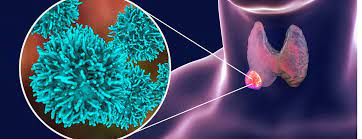What to Know About Thyroid Nodules: Are They Cancerous? Expert Contributes
The thyroid gland, a butterfly-shaped gland located in the neck, is crucial for regulating hormone synthesis, which helps to keep the metabolism, heart rate, and other bodily processes in check. Thyroxine, also known as T-4, and triiodothyronine, also known as T-3, are two crucial hormones produced by this gland. Your body’s critical functions are maintained by each of these hormones.
Thyroid nodules are tiny, solid nodules filled with fluid that develop abnormally in the thyroid gland. Until and until the person experiences pain, these nodules are not harmful. Thyroid nodules are reportedly more common in persons 50 and older. Unexpectedly, these nodules or growths are frequent among females. There are no symptoms associated with these nodules since they are too tiny to be seen. Regular physical checks, as well as procedures like needle biopsy, ultrasound, or CT scan, may find these nodules.
The majority of thyroid nodules are benign or noncancerous. On a CT scan or ultrasound, non-cancerous nodules often display particular traits such a cystic appearance, regular form, and smooth edges. Cancerous nodules are difficult to distinguish from non-cancerous ones, and imaging tools cannot pick them out.
Thyroid nodules may be evaluated to determine if they are malignant or benign using technological treatments and procedures.
The following are some methods for identifying and classifying thyroid nodules:
Ultrasound: The first step in locating thyroid nodules is to use ultrasound. Ultrasound methods may be used to assess the nodule’s size, shape, and composition. Despite being a helpful tool, ultrasonography cannot reliably detect cancer.
FNA Biopsy: A fine-needle aspiration (FNA) biopsy is a procedure that removes cells from a lesion for microscopic examination. The pathologist’s examination establishes the cell sample’s benign, suspicious, or malignant status.
Molecular Testing: The results of the FNA Biopsy may sometimes be ambiguous. Molecular testing is carried out to get a precise diagnosis and to comprehend the genetic alteration of these nodules. After a precise diagnosis, therapy may start.
Different therapies for thyroid nodules may be necessary depending on the diagnosis. Benign nodules could just need regular monitoring. A nodule must be treated right away if it is cancerous, which may include thyroid hormone suppression, surgery, or radioactive iodine therapy. All individuals with thyroid nodules need routine follow-up to track any changes in size or appearance.
Follow-up examinations may aid in the early detection of suspected malignancies, resulting in more effective therapy. Following the excision of malignant nodules, one may want to consider getting physical exams to check for any potential new growth.
In conclusion, thyroid nodules might be concerning even if the majority of them are benign. However, prompt detection and accurate diagnosis are essential for the best therapy. If you see any weird lumps or swelling in your neck or if you have risk factors for thyroid nodules, don’t hesitate to consult with a healthcare specialist if you are worried. You can guarantee the best outcomes and safeguard your thyroid function by taking an active and informed role in your health.







